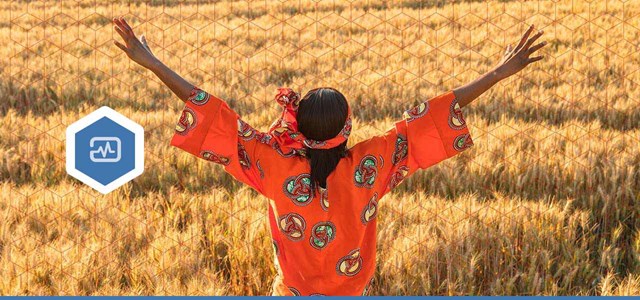
We humans are overrunning our planet and its limited resources, with no end in sight: the UN says that “roughly 83 million people” are born each year, adding another billion in just the next 20 years. Our current population of 7.6 billion alone is already putting a tremendous strain on Earth’s limited water, energy, land, and other resources.
And now, for the third year in a row, there has been a rise in world hunger. The U.N. says that “821 million people – one in nine – still go to bed on an empty stomach each night. Even more – one in three – suffer from some form of malnutrition.” These statistics are concerning for reasons beyond the human suffering; for example, malnourished children often have lifelong health problems and difficulty learning.
Driven by an awareness of this crisis and its many and complex causes, researchers at the Weizmann Institute of Science are leveraging their expertise in fields such as genomics, biochemistry, plant sciences, algorithms, chemistry, and more to find solutions.
In earlier research, Institute scientists devised a method for preventing a parasitic crop-killing weed in Africa, thus tripling yields of maize for Kenyan farmers; developed new varieties of wheat with nearly 40% higher yield and able to resist disease, insects, and drought; and created an environmentally friendly pesticide. But the work continues: read on for just some of the current ways Weizmann is helping.
-
Headline-making findings from Prof. Ron Milo showed that by growing plants rather than raising animals for food, farmers could feed twice as many people. Not only could more of us eat, the Milo lab found, but the plant-based replacements could produce 2- to 20-fold more protein per acre. In the U.S. alone, focusing on plants could feed all 327 million Americans – plus roughly 390 million more.
-
Moved to address an urgent public-health need – the fact that, in Africa, malnutrition contributes to nearly half of all deaths of children under five – Prof. Asaph Aharoni developed a new soy drink. Lactose-free, yet containing all seven of the healthful proteins found in cow’s milk, it can improve the health of malnourished children.
-
Prof. Aharoni’s lab also created two computer databases able to detect plant metabolites and categorize characteristics with useful biological activity – including traditional medicinal plants used in many developing countries. The methodology will help identify particularly healthy, nourishing fruits, vegetables, and plants.
-
Weizmann’s renowned advanced archaeology techniques identified ancient fava beans at sites of early Middle Eastern human habitation. Eaten worldwide, the nutritious legume also fixes nitrogen in the soil, which is important for sustainable farming of healthy crops. Understanding how the bean adapted to the ancient desert environment can help develop modern varieties better able to withstand pests and environmental stress.
-
The gene-editing technique CRISPR has made headlines for its potential to, among other things, eradicate disease. But it can be used in any organism – including plants. Prominent plant scientist Prof. Avi Levy has now created a CRISPR-based technique that can precisely customize a plant’s genetic makeup in a single generation.
This breakthrough technique makes it possible to redesign plant genomes, achieving what farmers have always dreamed of: an efficient path to precise crop design. They could grow plants that are more nutritious, more productive, able to live in inhospitable environments, and the like. Prof. Levy says that his CRISPR technique “looks like it may be a real revolution in science-driven agriculture.”
The Weizmann Institute’s basic research helps humankind in so many ways, but one of the most important is surely harnessing the power of science to fight world hunger – and you can be a partner in this worthy work.
